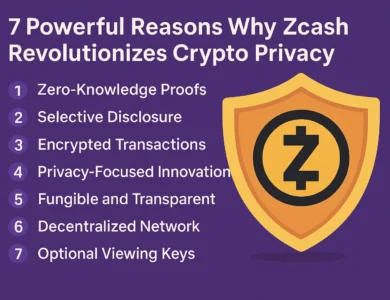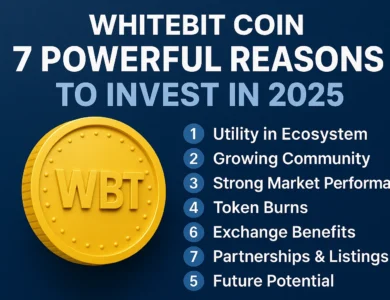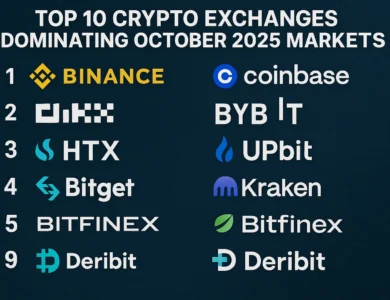
The cryptocurrency market has always been a rollercoaster of emotions, with altcoin season serving as the Holy Grail that retail investors desperately chase. For years, crypto enthusiasts have been waiting for that magical period when alternative cryptocurrencies dramatically outperform Bitcoin, creating life-changing wealth for those who positioned themselves correctly. However, as the crypto market evolves and matures, a sobering reality is emerging: the traditional altcoin season we once knew might be nothing more than a distant memory—or worse, a dangerous illusion that keeps investors trapped in a cycle of hope and disappointment.
The concept of altcoin season originated during the early days of cryptocurrency, particularly during the 2017 bull run when thousands of new tokens emerged and experienced astronomical gains. Back then, the pattern seemed predictable: Bitcoin would rally first, establishing market confidence, then profits would rotate into larger-cap altcoins, and finally, the frenzy would cascade down to smaller-cap projects. This altcoin rally created countless success stories and established a pattern that traders believed would repeat indefinitely.
However, the landscape has fundamentally changed. The cryptocurrency investment environment of today bears little resemblance to previous cycles. Regulatory scrutiny has intensified, institutional participation has altered market dynamics, technological development has consolidated around fewer projects, and the sheer number of competing tokens has created an oversaturated marketplace where most projects struggle to find genuine utility or user adoption.
This article explores five critical reasons why the next altcoin season might never arrive, examining the structural changes in the crypto market that have made the traditional cycle increasingly unlikely. Whether you’re a seasoned trader or a newcomer hoping to catch the next wave, understanding these factors is essential for making informed decisions about your cryptocurrency portfolio and avoiding the trap of chasing a rally that may never materialize.
1. Market Maturation Has Changed the Game Forever
The Evolution of Institutional Participation
The crypto market is no longer the Wild West playground it once was. Institutional investors, including hedge funds, pension funds, and publicly traded companies, now control significant portions of Bitcoin and major altcoins. This institutional adoption has brought stability to the market but has simultaneously eliminated the extreme volatility that characterized previous altcoin seasons.
These sophisticated players operate with entirely different strategies than retail investors. They conduct thorough due diligence, focus on projects with proven track records, and rarely engage in the speculative frenzy that drives altcoin rallies. Their presence has created a more rational market where fundamentals matter more than hype, making it increasingly difficult for questionable projects to experience parabolic gains simply because “it’s altcoin season.”
Regulatory Frameworks Are Tightening Globally
Governments worldwide are implementing comprehensive cryptocurrency regulations that fundamentally alter how digital assets operate. The Securities and Exchange Commission (SEC) in the United States has taken an aggressive stance, classifying many altcoins as securities, which subjects them to strict regulatory requirements. Similar patterns are emerging in Europe, Asia, and other major markets.
This regulatory clarity, while potentially beneficial for long-term industry health, eliminates many of the conditions that previously enabled altcoin season. Projects can no longer launch with minimal oversight, retail investors face more restrictions on accessing certain tokens, and the fear of regulatory action prevents many traders from aggressively accumulating alternative cryptocurrencies like they did in previous cycles.
2. The Oversaturation Problem Is Suffocating Innovation
Too Many Projects, Too Little Differentiation
The cryptocurrency market currently hosts tens of thousands of different tokens, with new projects launching daily. This oversaturation has created an environment where genuine innovation gets lost in a sea of copycat projects, meme coins, and outright scams. Unlike 2017, when a relatively small number of altcoins competed for attention, today’s investors face decision paralysis when trying to identify legitimate opportunities.
This proliferation dilutes the capital available for altcoin investment. Even during bullish periods, money gets distributed across so many projects that few experience the concentrated buying pressure necessary to trigger the explosive gains associated with altcoin season. The mathematical reality is simple: the same amount of capital spread across 50,000 tokens will produce dramatically different results than when spread across 500 tokens.
The Death of the “Rising Tide Lifts All Boats” Mentality
Previous altcoin seasons were characterized by indiscriminate buying where virtually every project pumped regardless of fundamentals. Investors today have become more sophisticated and selective. The painful lessons learned from previous cycles—where countless tokens lost 90-99% of their value—have created a more cautious market participant who demands real utility, active development, and sustainable tokenomics before deploying capital.
This selectivity means that even if Bitcoin rallies strongly, the automatic rotation into altcoins may not occur as it historically did. Instead, capital might concentrate in a handful of proven projects while the vast majority of alternative cryptocurrencies stagnate or decline, preventing the broad-based rally that defines traditional altcoin season.
3. Bitcoin Dominance Might Never Break Down Again
The Digital Gold Narrative Has Solidified
Bitcoin has successfully established itself as “digital gold” in the minds of both institutional and retail investors. This narrative positions BTC as a store of value and inflation hedge rather than just another speculative asset. As this perception strengthens, investors increasingly view Bitcoin as the safest entry point into cryptocurrency investment, reducing their appetite for riskier altcoins.
The trend is evident in Bitcoin dominance metrics, which measure Bitcoin’s market capitalization relative to the total crypto market. While this metric fluctuated dramatically in previous cycles, creating opportunities for altcoin rallies, it has become increasingly sticky in recent years. Institutional buyers specifically seek Bitcoin exposure, not broad cryptocurrency exposure, fundamentally altering the capital flow dynamics that previously fueled altcoin season.
Network Effects and Security Budgets Create Moats
Bitcoin’s massive hash rate, battle-tested security, and unparalleled decentralization create network effects that become stronger over time. No altcoin has come close to matching Bitcoin’s security budget, which now exceeds billions of dollars annually. For investors prioritizing security and long-term viability, this gap is insurmountable.
As security and decentralization become more valued in an increasingly regulated environment, Bitcoin becomes even more attractive relative to altcoins. This shift in priorities suggests that capital might remain concentrated in BTC rather than rotating into riskier alternative cryptocurrencies, preventing the traditional altcoin season dynamics from playing out.
4. Technological Consolidation Favors Established Players
Layer-2 Solutions Are Reducing the Need for New Chains
The proliferation of Layer-2 scaling solutions on Bitcoin and Ethereum is eliminating many use cases that previously justified launching new altcoins. The Lightning Network for Bitcoin and various rollup solutions for Ethereum provide scalability without requiring users to adopt entirely new blockchain platforms.
This technological evolution concentrates activity and value on established chains rather than distributing it across hundreds of competing alternative cryptocurrencies. Developers can build innovative applications on these Layer-2 networks without creating new tokens, reducing the speculative opportunities that characterized previous altcoin seasons.
Interoperability Protocols Change the Competitive Dynamics
Cross-chain bridges and interoperability protocols have made it easier to move assets between different blockchain networks, reducing the “stickiness” that once benefited individual altcoin ecosystems. Investors no longer need to commit to a single chain, which paradoxically reduces the incentive to accumulate specific altcoins in anticipation of ecosystem growth.
This fluidity prevents the formation of the isolated bubbles that previously drove altcoin rallies. When capital can freely flow between chains, the concentrated buying pressure necessary for exponential price appreciation becomes harder to achieve, making traditional altcoin season dynamics less likely to materialize.
5. Macroeconomic Conditions No Longer Support Risk-On Speculation
The Era of Free Money Has Ended
The extremely low interest rates and quantitative easing policies that characterized the post-2008 financial crisis created an environment where speculative assets like altcoins thrived. Investors sought yield anywhere they could find it, and cryptocurrency offered returns that traditional markets couldn’t match. This “risk-on” environment was essential for altcoin season dynamics.
However, central banks have pivoted to fighting inflation through interest rate increases and quantitative tightening. This macroeconomic shift makes safe assets like government bonds competitive with risky crypto investments, particularly speculative altcoins. When investors can earn 4-5% on treasury bills with zero risk, the risk-reward calculation for holding volatile alternative cryptocurrencies changes dramatically.
Liquidity Constraints Limit Speculative Behavior
The reduced liquidity in global financial markets affects cryptocurrency disproportionately. Altcoins, being the riskiest segment of an already risky asset class, face the most severe capital constraints during liquidity crunches. The massive capital inflows required to fuel altcoin season simply may not exist in the current macroeconomic environment.
Furthermore, many retail investors who participated in previous crypto bull markets experienced significant losses and have either exited the market entirely or become extremely conservative in their approach. This behavioral shift, combined with tighter financial conditions, creates a challenging environment for the speculative fervor necessary to drive altcoin rallies.
Conclusion
The harsh reality facing cryptocurrency investors is that altcoin season, as traditionally understood, may be a relic of the past. The combination of market maturation, oversaturation, Bitcoin dominance, technological consolidation, and unfavorable macroeconomic conditions has created an environment fundamentally different from previous cycles.
This doesn’t mean that individual altcoins can’t succeed or that cryptocurrency investment is dead. Rather, it suggests that the broad-based, indiscriminate rallies that defined previous altcoin seasons are unlikely to repeat. Future gains will likely concentrate in projects with genuine utility, strong fundamentals, and real-world adoption rather than spreading across thousands of speculative tokens.
For investors, this realization demands a fundamental shift in strategy. Instead of waiting for altcoin season to arrive and lift all boats, focus on identifying quality projects with sustainable value propositions. Diversification across hundreds of altcoins hoping to catch the next wave may be a losing strategy in this new environment.
The dream of altcoin season has kept countless investors holding depreciating assets for years. Perhaps it’s time to stop dreaming and start adapting to the reality of a matured, regulated, and more selective crypto market. Those who recognize this shift early and adjust their approach accordingly will be best positioned for whatever the future of cryptocurrency holds.
Read More: 7 Powerful Reasons Why Zcash Privacy Revolutionizes Crypto






